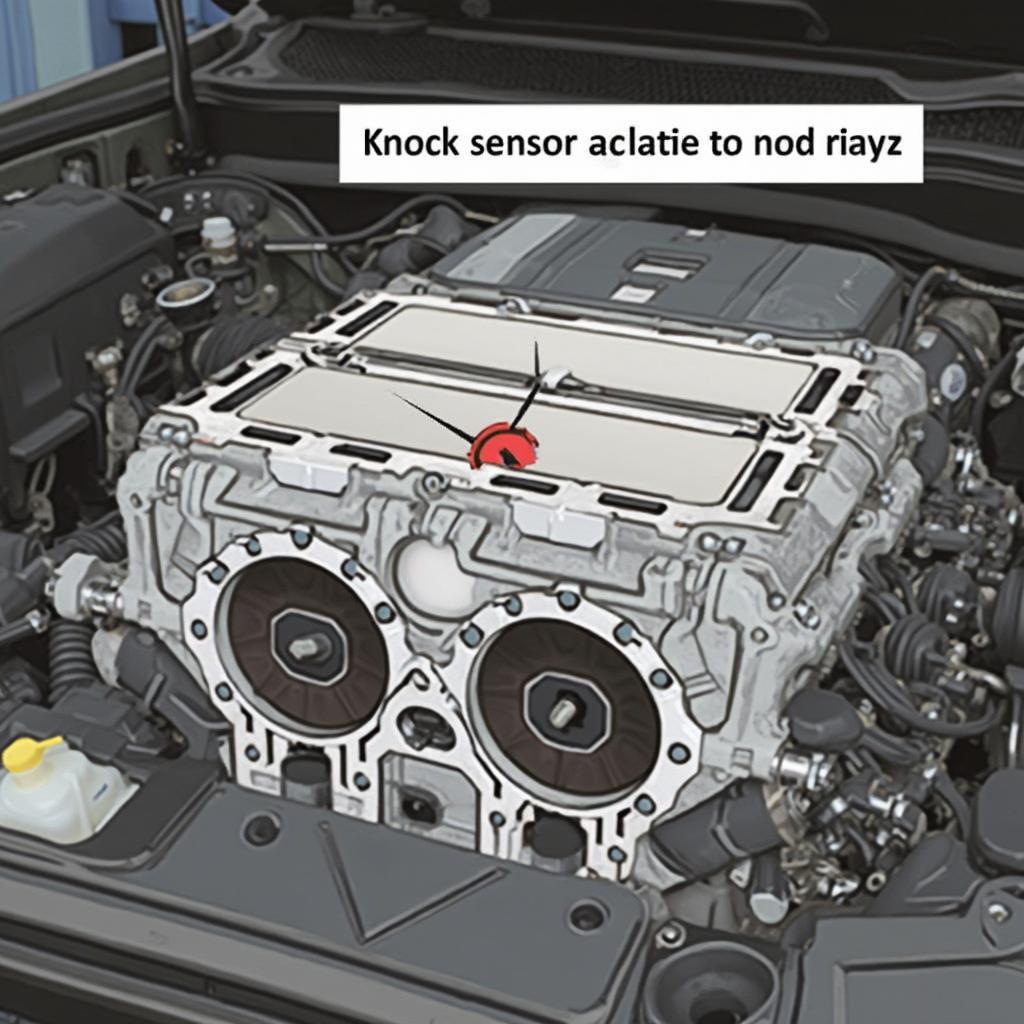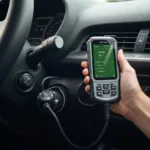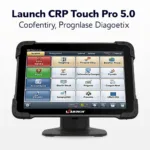The OBD2 code P0328, indicating a Knock Sensor 1 Circuit High Input (Bank 1 or Single Sensor), is a common issue that can significantly impact your vehicle’s performance. This comprehensive guide will delve into the causes, symptoms, diagnostic procedures, and solutions for the P0328 code, empowering you to address this problem effectively.
What Does the P0328 Code Mean?
The P0328 code signals that the knock sensor circuit, specifically sensor 1 in bank 1 or the single sensor if the engine only has one, is sending a voltage signal that’s higher than the acceptable range to the Engine Control Module (ECM). The knock sensor’s role is crucial; it detects engine knocking, also known as detonation, which is an uncontrolled explosion of the air/fuel mixture in the cylinder. This can cause serious engine damage. When the ECM receives this high input, it interprets it as excessive knocking and adjusts the engine timing to compensate, often resulting in reduced performance.
Symptoms of the P0328 Code
Recognizing the symptoms of a P0328 code can help you diagnose the issue early. While the check engine light is the most obvious sign, you might also experience:
- Decreased fuel economy
- Reduced engine power
- Hesitation or stumbling during acceleration
- Audible knocking or pinging from the engine (especially under load)
Causes of the P0328 Code
Several factors can contribute to a P0328 code:
- Faulty knock sensor
- Damaged wiring or connector in the knock sensor circuit
- Loose knock sensor
- Low octane fuel usage
- Excessive carbon buildup in the engine cylinders
- Problems with the ECM (rare but possible)
Diagnosing the P0328 Code
Diagnosing the P0328 code requires a systematic approach:
- Retrieve the Code: Use an OBD2 scanner to confirm the P0328 code.
- Inspect the Knock Sensor: Visually check the knock sensor for damage, looseness, or corrosion.
- Check the Wiring: Inspect the wiring and connector for any breaks, shorts, or loose connections.
- Test the Sensor: Use a multimeter to test the knock sensor’s resistance and voltage output.
- Check for Other Codes: See if any other codes are present, as they could be related to the P0328.
How to Fix the P0328 Code
Depending on the diagnosis, the following solutions can fix the P0328 code:
- Replace the Knock Sensor: If the sensor is faulty, replacement is the most common solution.
- Repair the Wiring: Repair or replace any damaged wiring or connectors.
- Tighten the Sensor: Ensure the knock sensor is properly tightened to the engine block.
- Use the Correct Fuel: Use the octane fuel recommended by your vehicle’s manufacturer.
- Clean the Engine: Remove carbon buildup from the cylinders.
- Replace the ECM: In rare cases, a faulty ECM might require replacement.
“A properly functioning knock sensor is vital for engine longevity,” says John Miller, a certified automotive technician with over 20 years of experience. “Ignoring a P0328 code can lead to significant engine damage.”
Conclusion: Addressing the OBD2 Code P0328
The OBD2 code P0328 signals a potential problem with your vehicle’s knock sensor circuit. Addressing this issue promptly is crucial to prevent engine damage and maintain optimal performance. By understanding the causes, symptoms, and diagnostic procedures, you can effectively troubleshoot and resolve the P0328 code, ensuring your vehicle runs smoothly and efficiently. Don’t delay; taking action now can save you time and money in the long run.
FAQ: Common Questions about the P0328 Code
- Can I drive with a P0328 code? While you can drive for a short time, prolonged driving with this code could damage your engine.
- How much does it cost to replace a knock sensor? The cost typically ranges from $100 to $300, including parts and labor.
- Can I replace the knock sensor myself? Yes, with basic mechanical skills and tools, it’s possible to replace the sensor yourself.
- What happens if I ignore the P0328 code? Ignoring the code can lead to detonation and serious engine damage.
- How often should I check my OBD2 codes? It’s a good practice to check your codes periodically, especially if you notice any unusual performance issues.
- Is the P0328 code the same for all cars? While the code definition is the same, the location and specific diagnostic steps can vary between vehicles.
- What is the difference between bank 1 and bank 2? Engines with more than one cylinder bank (V6, V8, etc.) will have a bank 1 and bank 2. Bank 1 typically contains cylinder #1.
For further assistance, explore our other articles on OBD2 codes and car maintenance.
Need Help? Contact us via WhatsApp: +1(641)206-8880, Email: [email protected] or visit us at 789 Elm Street, San Francisco, CA 94102, USA. We have a 24/7 customer support team.


